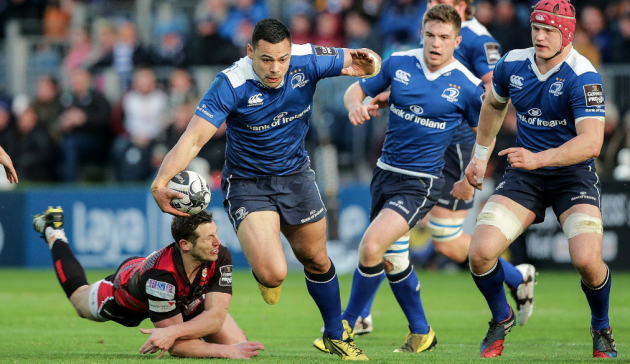We examine how Ben Te'o fared for Leinster on the day England coach Eddie Jones highlighted his qualities
Already looking far past the Grand Slam he landed at his first attempt in March, Eddie Jones spent last Friday morning discussing a few selection issues ahead of England‘s June tour of Australia.
He knows his side must be better, more dynamic, more powerful and more incisive. Naturally, there was a witty analogy – “you want to fix the roof while the sun is still shining”.
Jones did not require much prompting to bring up Ben Te’o, Leinster‘s New Zealand-born, Worcester Warriors-bound centre. Te’o, a former teammate of Sam Burgess at the South Sydney Rabbitohs, qualifies through his English mother.
If he can be registered in time by the RFU – the need for a “live contract with an English team” was mentioned – or if Jones is able to slightly bend the rules on overseas players representing England, it seems definite the 29-year will travel.
“The boy can play,” said Jones. “He was an outstanding rugby league player – an absolutely outstanding rugby league player.
“He can go through the line, he’s got a short passing game and he hits. You don’t want to run down his channel when he’s defending at 12.
“Potentially, we’re to have three potential world-class options at 12 – Te’o, [Manu] Tuilagi and Owen Farrell. It’s a great situation to be in. We can just pick the one that suits the game.”
The repetition of potential in a double conditional in that final claim suggests there is a way to go. Henry Slade will almost certainly come into the equation. Even so, Te’o demonstrated the qualities he would offer Test rugby during a 30-23 defeat of Edinburgh in Dublin later the same day.
Scanning, stepping and work-rate
We join this Pro12 encounter after Leinster have levelled the scores at 3-3, Luke Fitzgerald fields the restart and passes to Jordi Murphy. Meanwhile, at the top of the screen, Te’o is retreating into midfield:
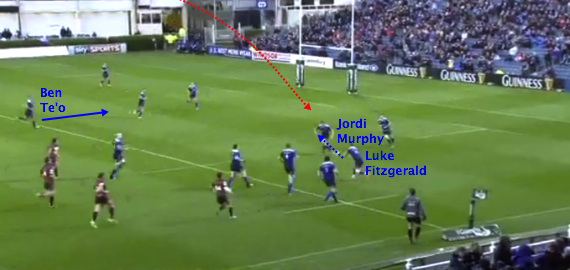
As Murphy takes contact, Te’o joins the backline. Scanning the Edinburgh defenders, he will have seen two tight-five forwards around the fringes – not unusual at all…
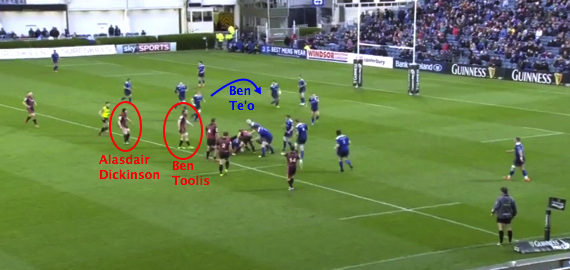
…but when Te’o receives the ball, from fly-half Ian Madigan following a pass from Rhys Ruddock behind the decoy line of Richardt Strauss…
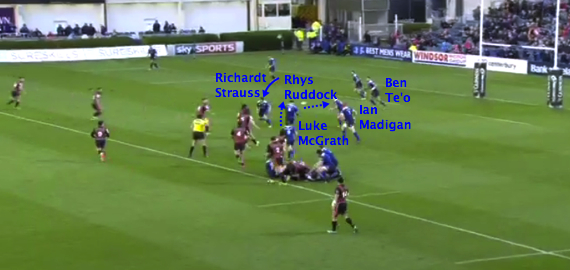
…there is space to cut back:
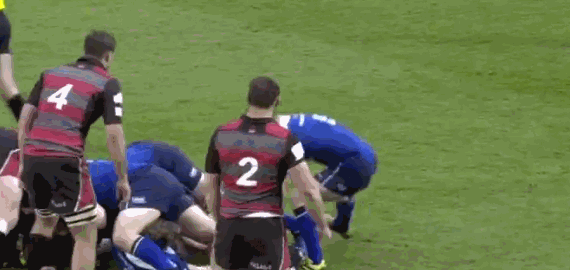
Stepping past both Alasdair Dickinson and Ben Toolis, Te’o then shunts through two more challenges to cross the 22. Madigan can clear with Leinster on the front foot, well beyond the gainline:
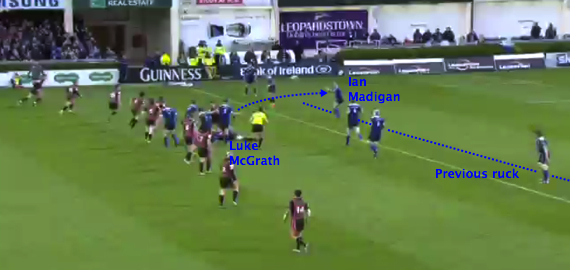
A close-up shot of Te’o’s run highlights his balance and explosive, fast-twitch athleticism:
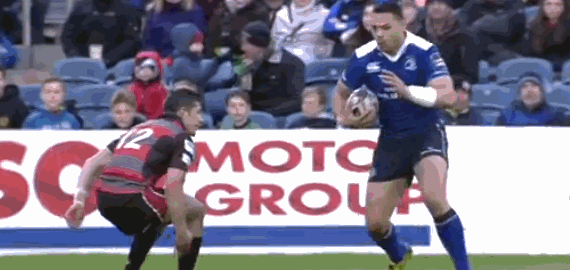
Because Madigan is outside of the 22, he aims his kick infield. Jason Tovey sends the ball back to his opposite number. At this point, we can see Te’o, who has already sprinted left to join the chase by this point, backtracks quickly to join Leinster’s counter-attack:
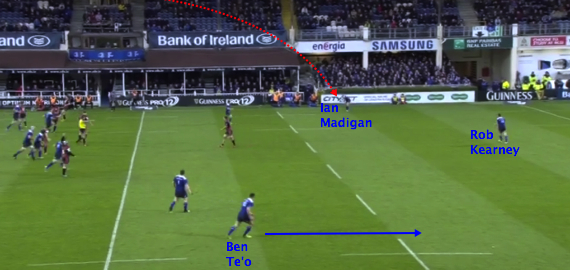
When Fitzgerald receives a long pass from full-back Rob Kearney, Te’o is an option out wide:
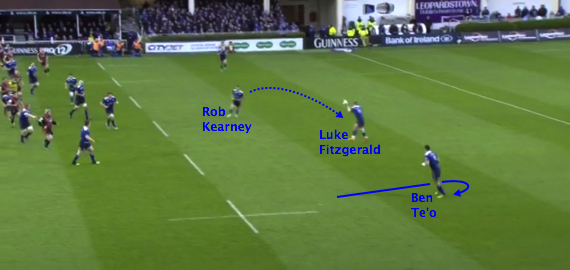
From here, Leinster cause Edinburgh serious trouble:
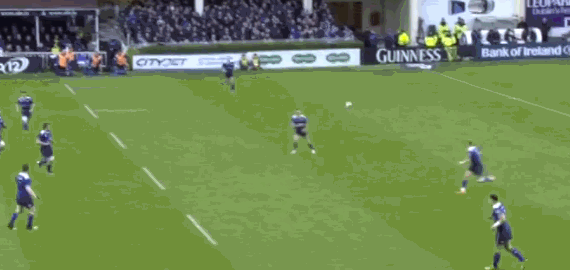
The most impressive facet of Te’o’s involvement here is the restraint of his decision-making. From an offside position, scrum-half Luke McGrath is calling for a miracle kick infield or a looping inside pass:
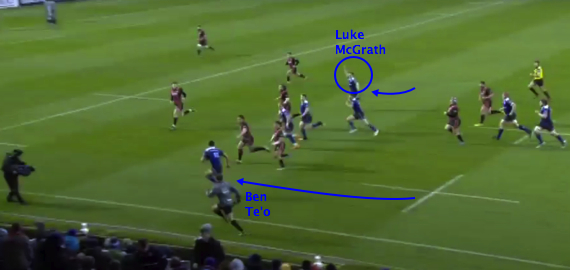
Rather than risk a turnover though, Te’o slows his leg speed, braces for the tackle of John Hardie, brushes off the Scotland flanker and sets a target so the hosts can recycle. Leinster retain possession.
We will examine Te’o’s contact skills and commitment to continuity later, but he was primarily deployed as a potent strike-runner.
Punching holes, laying platforms
A lightweight midfield of George Ford, Farrell and Jonathan Joseph meant England’s backline could not be especially direct during the Six Nations. On occasion, they did position Billy Vunipola in midfield from shortened lineouts, but opposition defences could obviously counter that by crowding their own midfield with back-rowers.
What Te’o, like Tuilagi, offers is a gainline-breaking option in the backline. Leinster used him in this role plenty of times. Take this set piece:

The Brumbies have used a similar move during their current Super Rugby campaign. A six-man lineout, normally a signpost for a driving maul, is used to tie in the opposition pack. In this case, flanker Josh van der Flier, stands at scrum-half.
He feigns to latch on to the ball…
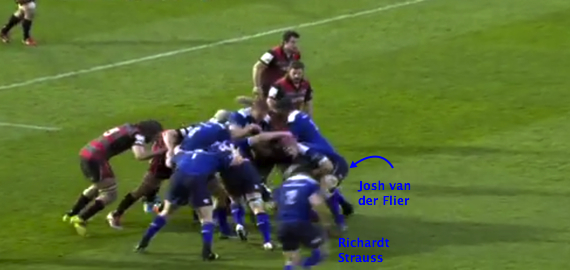
…but instead feeds Strauss, who arcs around on to the openside:
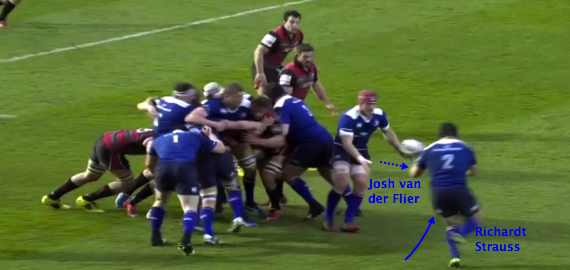
When Te’o takes a subsequent pass at pace, his presence sucks in five members of the Edinburgh team:

Despite such heavy traffic, he wins the collision and crosses the gainline once again. Minutes later came a more conventional means of catapulting Te’o, from a full lineout:

Firstly, Madigan must transfer McGrath’s pass to Te’o before Hardie, in the ‘tail-gunner’ position at the rear of Edinburgh’s lineout, can disrupt:
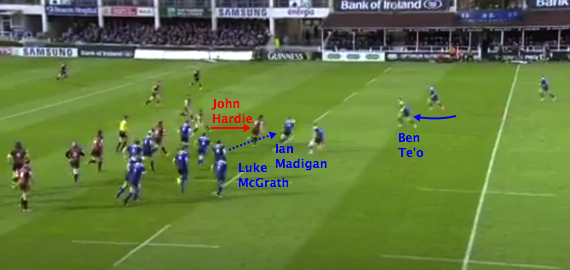
Once this has been acheived, Te’o can go to work. A jink to the left sees off Tovey before he shrugs off Phil Burleigh as Noel Reid flies up in support:
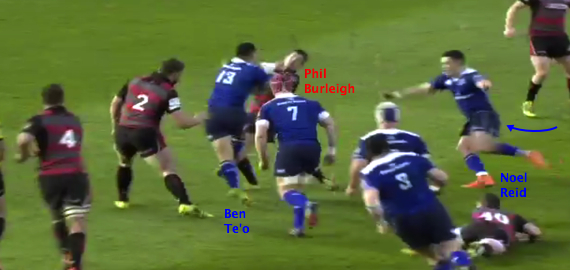
At this point, more canny decision-making comes in. Te’o frees his right arm. He could easily flick a speculative offload towards Reid:
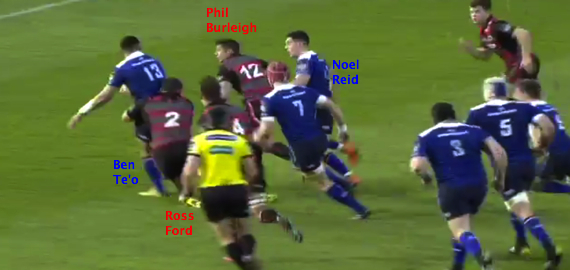
Again though, he holds on so there is no chance of Burleigh intercepting. A closer look also captures some textbook ball placement on the floor:
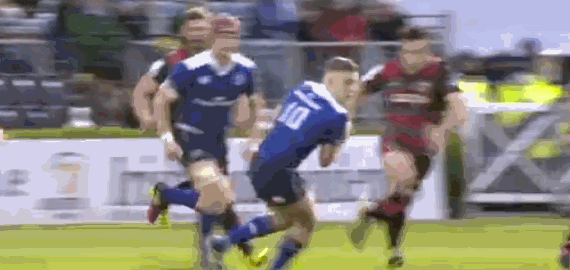
This blend of power and pragmatism will very much excite Jones, as will Te’o’s linking ability.
Taking the chance to distribute
Though this match was rather fractured and frantic, there were also glimpses of the “short passing game” that Jones had heralded. Here, Ruddock is released for a trundle close to the touchline:
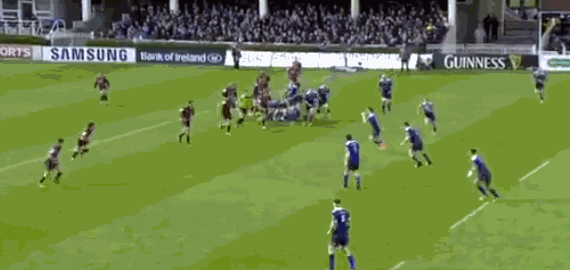
An imposing figure such as Te’o will always attract defenders and in this case, both Chris Eves and Damien Hoyland seem slightly narrow and closed off – preoccupied with the carrier’s running threat:
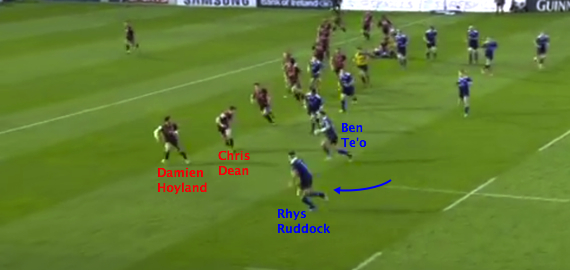
Te’o identifies as much and sends a flat pass in front of Ruddock that invites the flanker to embark on an outside arc:
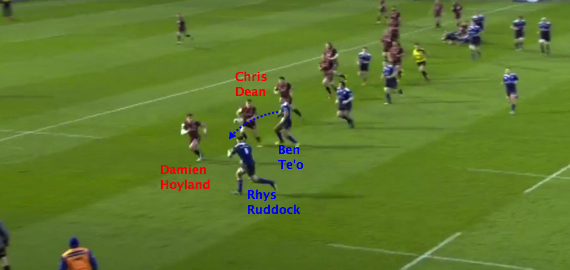
A Leinster line-break results, as it also did from this chaotic passage:
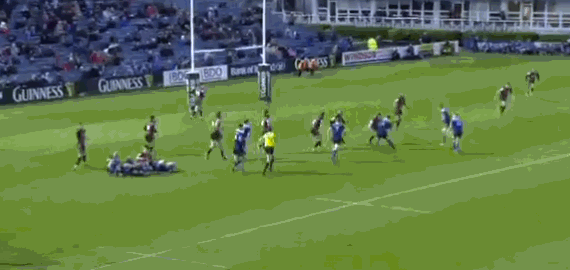
Now, this may appear to be a reckless intervention from Te’o. However, as previous clips have demonstrated, he values possession extremely highly. His overhead offload is intended for Fergus McFadden, who slips just after Te’o has committed to releasing the pass.
If McFadden were on his feet at this point, he would have caught the ball and been able to release Kearney:
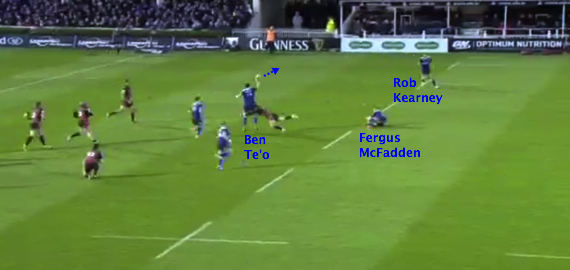
As it happens, there is so much space that Reid can recover the ball before being shut down by an Edinburgh player. Though spectacular, Te’o’s slam dunk is quite safe. Having said that, a more straightforward pass out of contact in the second half so nearly created a try:
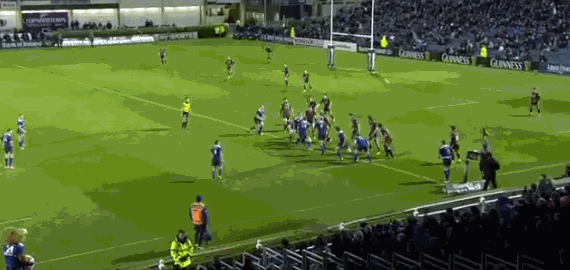
Leinster’s forwards execute another faux-maul from the lineout and the ball is moved left to Te’o, who makes a beeline for the 10-12 channel. This isolates Edinburgh’s outside centre, forcing him to make a decision as Reid tears forward to reach his teammate’s shoulder:

Te’o reaches the gainline and Reid rushes past the flat-footed defender opposite him:
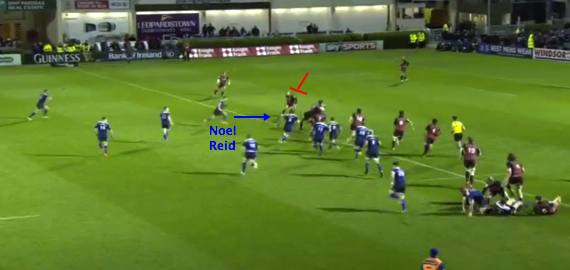
Players like Te’o, hefty carriers with offloading skills, provide targets for support runners. In this instance, Reid is rewarded for second-guessing that his colleague will be able to free an arm and release the pass.
Dangerous decoy
Over his brief but eventful union career with Bath and England, some of Burgess’ most effective contributions came as a decoy runner. Similarly, because of his attributes with the ball, Te’o can be influential without it.
After a frustrating first half saw Leinster squander the vast majority of territory and possession to reach the break just 6-3 in front, this score on 43 minutes was vital:
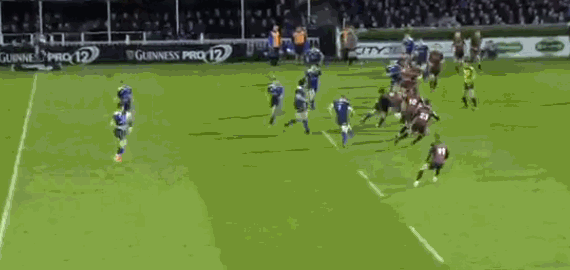
A delicious inside pass from Madigan and Fitzgerald’s break catch the eye, but Te’o also has a subtle role. Watch Reid direct him on the previous phase, demanding he run a short angle into a large gap:
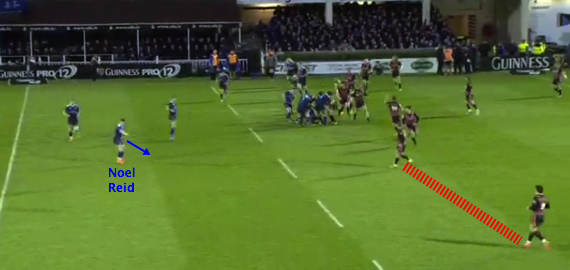
As Reid runs past the ball himself, cutting off WP Nel cleverly, Te’o’s presence coaxes the rest of the Edinburgh line into a drift. This allows Madigan and Fitzgerald to cut against the grain:
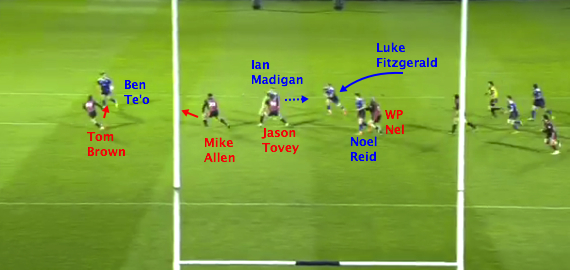
This is a prime example of an attacking team manipulating their opposition. Having deployed Te’o as a battering ram in the first period, Leinster then use him to suck in would-be tacklers before sending a runner elsewhere.
Finally, we come to Te’o’s destructive talents in defence.
Owning collisions and organisation
Te’o wore the 13 shirt on Friday evening, but there were still examples of the toughness in the 12 channel that Jones lauded. This shuddering hit sapped Edinburgh’s momentum:

Not even in the frame as Edinburgh instigate the phase…
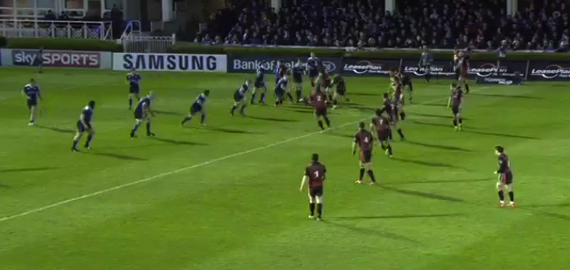
…Te’o reads the narrow pattern of the attack, jamming in to make a robust challenge that halts 113kg Anton Bresler:
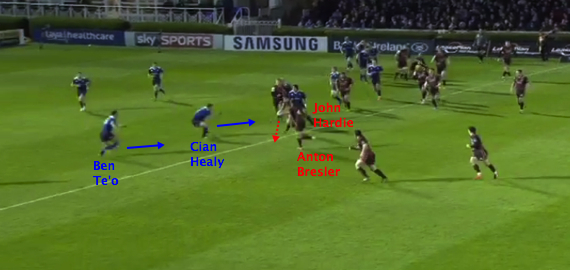
Te’o then bounces to his feet immediately to adopt the right-hand guard role. Edinburgh do well to spin the ball left and score from the very next phase. Later on in the second period, they made far less headway from inside their own half:
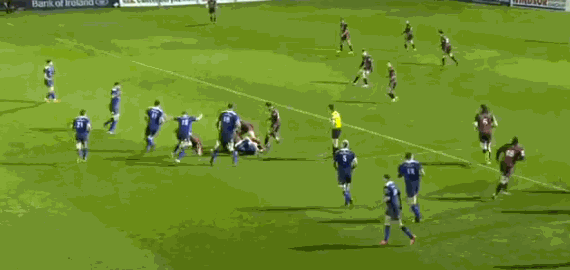
Mike Allen pays the price for an upright body position here. Te’o wraps him up with an uncompromising tackle…
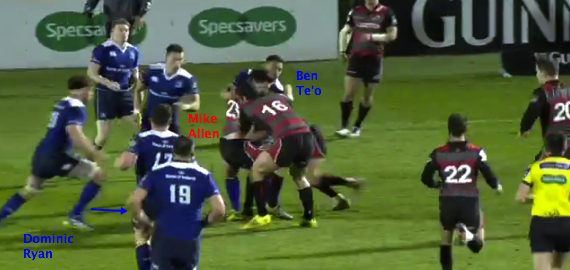
…allowing Dominic Ryan to rush in, hold Allen above the ground, form a maul and complete the copybook ‘choke tackle’:
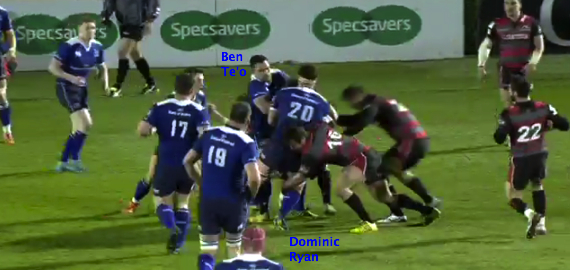
Lastly, we come to some calm communication in the very final seconds. Edinburgh are striving for a try that could snatch an unlikely draw:
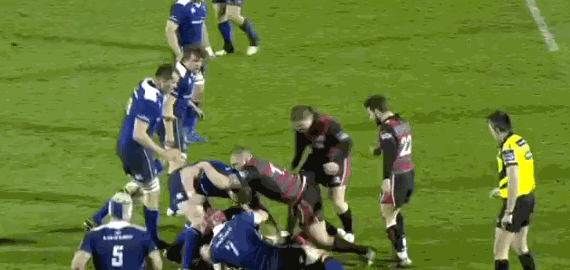
In the Six Nations, Jones praised the spatial awareness of Joseph – a hugely underrated part of the Bath centre’s play. Here, Te’o showcases his own foresight and communication skills before making an important tackle.
Initially standing as the final man in the defensive line, he clocks that Edinburgh have an overlap. Te’o beckons wing Fitzgerald to leave the back-field, where he is waiting for a kick, to fill the space on the left flank:
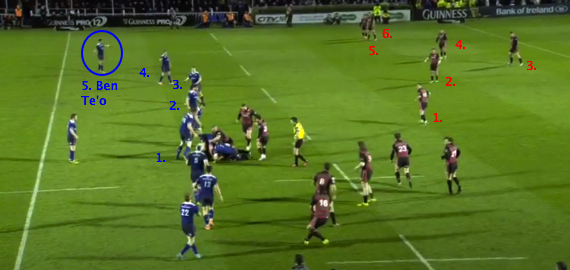
Fitzgerald does so…
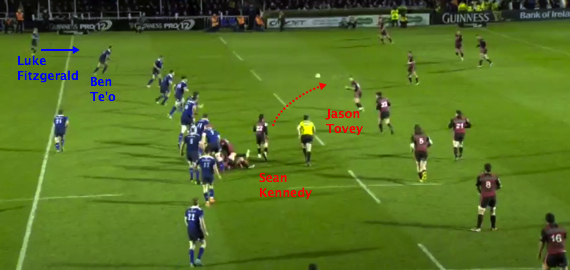
…and Te’o fells Magnus Bradbury.
Shipping a couple of breakdown penalties during the match, Te’o did demonstrate that there remains a rawness to his union game. That said, Jones’ comments were largely justified. Worcester, and perhaps England, have a fine player on their hands.





